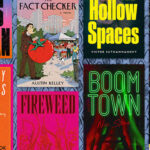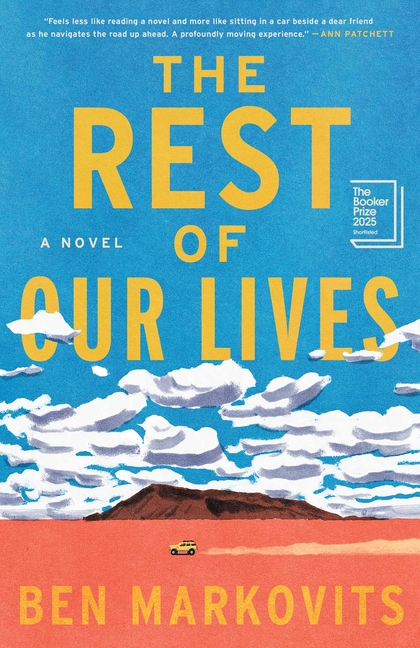Someone drops dead after a bite of deviled egg. A barista finds a body behind her coffee shop. A food critic keels over between courses. In culinary cozy mysteries, meals aren’t just memorable—they’re potentially fatal.
But readers don’t just flock to these books for the bodies. They come for the buttercream. The beef bourguignon. The burned pancakes that ruin breakfast and spiral the day. Culinary cozies invite us to sink into fictional worlds that feel warm and familiar, even when a whisk-wielding murderer is on the loose.
As a lifelong foodie and a debut cozy mystery author, I’ve always believed the way to a reader’s heart might just be through their stomach. There’s something wildly satisfying about following a trail of cookie crumbs that leads to a killer, especially if you can pause for a pun and some pie along the way. Culinary mysteries don’t just serve up suspense. They nourish the soul.
But while these stories are often wrapped in warmth, there’s something simmering under the surface. That’s part of what makes the genre so addictive.
In my debut novel, A Murder Most Fowl, my sleuths inherit their aunt’s food truck and all the nostalgia (and fried chicken) that comes with it. Between sabotage, murder, and memory, food is more than flavor in my book. It’s fuel for characters, conflict, and community.
Why are culinary cozy mysteries so appealing? It’s the promise, not just the puzzle. Solace in a turbulent world. The assurance that no matter how twisted the trail gets, there’ll be coffee brewing, a cake cooling, or a casserole in the oven by the end.
Food isn’t just a theme in these books. It’s a sensory anchor. Descriptions of pastries and home-cooked meals ground the reader in a fictional town that feels like home. It transforms settings into destinations, and characters into friends. Ask fans about their favorite culinary mysteries and they’ll tell you about the murder, sure. But they’ll rave about the candy shop, the tearoom, or the deli with the tasty sandwiches and even juicier gossip. And of course, let’s not forget the recipes at the back that let readers recreate what their favorite sleuth nibbled on during a stakeout.
Whether it’s a poisoned jam jar, a missing ingredient, or a culinary clue hiding in plain sight, food is often the thread that unravels the crime. The kitchen is the heart of both the story and the mystery, where rumors surface, tempers flare, and secrets are served alongside second helpings.
And maybe that’s the real magic. Not just the flour or the fudge, but the feeling.
In thrillers, it’s often a ticking clock or a shadowy villain that drives tension. In a culinary cozy? It might be a sabotaged fridge, a stolen recipe, or a suspicious lack of nutmeg. The stakes feel personal, and that’s the secret sauce.
Culinary cozies acknowledge the chaos without losing the comfort. They don’t trivialize crime; they reframe it through community.
That’s the balance culinary cozies must strike. On the one hand, they center around murder. On the other, they offer a warm, often humorous world where you’re just as likely to find a gossiping neighbor or a bake sale as you are a body. The challenge lies in creating high-stakes tension while preserving a comforting tone. No easy feat when someone’s been poisoned mid-potluck.
As writers, we have to make the mystery matter without leaning too far into darkness. Humor helps. So do mouthwatering meals, quirky side characters, and a sleuth you’d want to share appetizers with. Culinary cozies walk a deliciously fine line. The world is charming, but not shallow. Serious things happen, and important topics are discussed. But in the end, justice is served. Sometimes with mashed potatoes.
That balance is part of what draws both writers and readers to the genre. It allows us to explore very real human motives—jealousy, greed, betrayal—through a lens of empathy and even entertainment.
In A Murder Most Fowl, my sleuth Beth discovers that the sabotage surrounding her food truck might be more than just a TV show competition. It might be a cover for something much more sinister. But it’s the food, and the memories, that guide her toward understanding the people (and secrets) of the competition. Scenes of sizzling oil and bubbling batter offer more than a cozy atmosphere. They reveal character and create tension. Humor and food helped balance the darkness lurking behind every missing spice jar and misplaced knife.
Books like Arsenic and Adobo by Mia P. Manansala tap into this deeply. That novel delivers laugh-out-loud humor, a tight mystery, and a rich portrayal of Filipino-American food culture that transports you to the kitchen with Lila and her family. Others, like The Donut Shop Mysteries or The Bakeshop Mysteries, charm readers with small-town warmth, generational ties, and just enough danger to keep the frosting from being too sweet.
Another reason this genre is so loved is familiarity. Cozy mysteries lean into the known: a small town, strange locals, and a determined amateur sleuth. But when you layer in food—especially food readers can see, smell, or even replicate in their own kitchens—it creates a richer emotional experience. You’re not just reading about a murder. You’re at the counter sipping coffee while the sleuth grills a suspect over lemon bars.
The food in these stories isn’t just aesthetic. It’s the foundation of the narrative. Whether the protagonist is a barista, a caterer, or a hot sauce heiress, culinary cozies provide a tactile, flavorful anchor. It’s why so many readers come for the mystery and stay for the muffins.
Culinary cozies allow us to confront life’s messes without losing heart. Though the stakes are personal and the deaths unsettling, the setting, with its food and familiarity, provides stability. We want the killer caught, yes. But we’re wondering about tomorrow’s specials. And we’ll come back, book after book, for both.
Food can evoke powerful memories. It can remind you of the smell of your grandmother’s kitchen, the first meal you cooked for someone you loved, the way grief tastes like toast because it’s all you could manage. It connects us, and in culinary mysteries, it can solve the crime.
Maybe that’s why the genre keeps growing. In a time when the world often feels divided, these books offer a little relief. They remind us that connection still matters. That small-town gossip, shared meals, and yes—even solving murders—can bring people together. Especially if there are chicken wings.
So the next time you find yourself at the intersection of cinnamon and suspense, don’t be surprised if a murder is on the menu. And pass the hot sauce, would you? Solving crime can be hungry work.

















